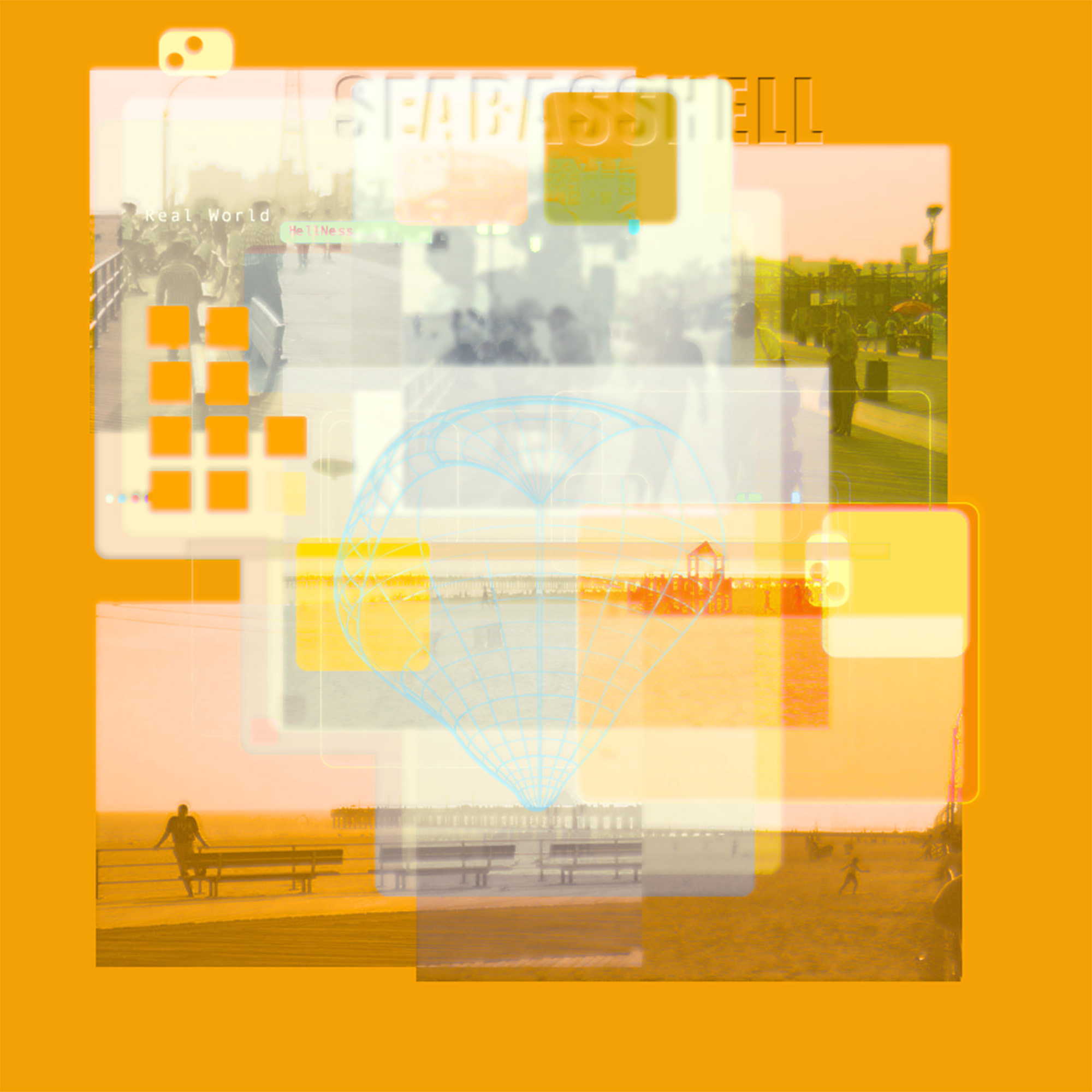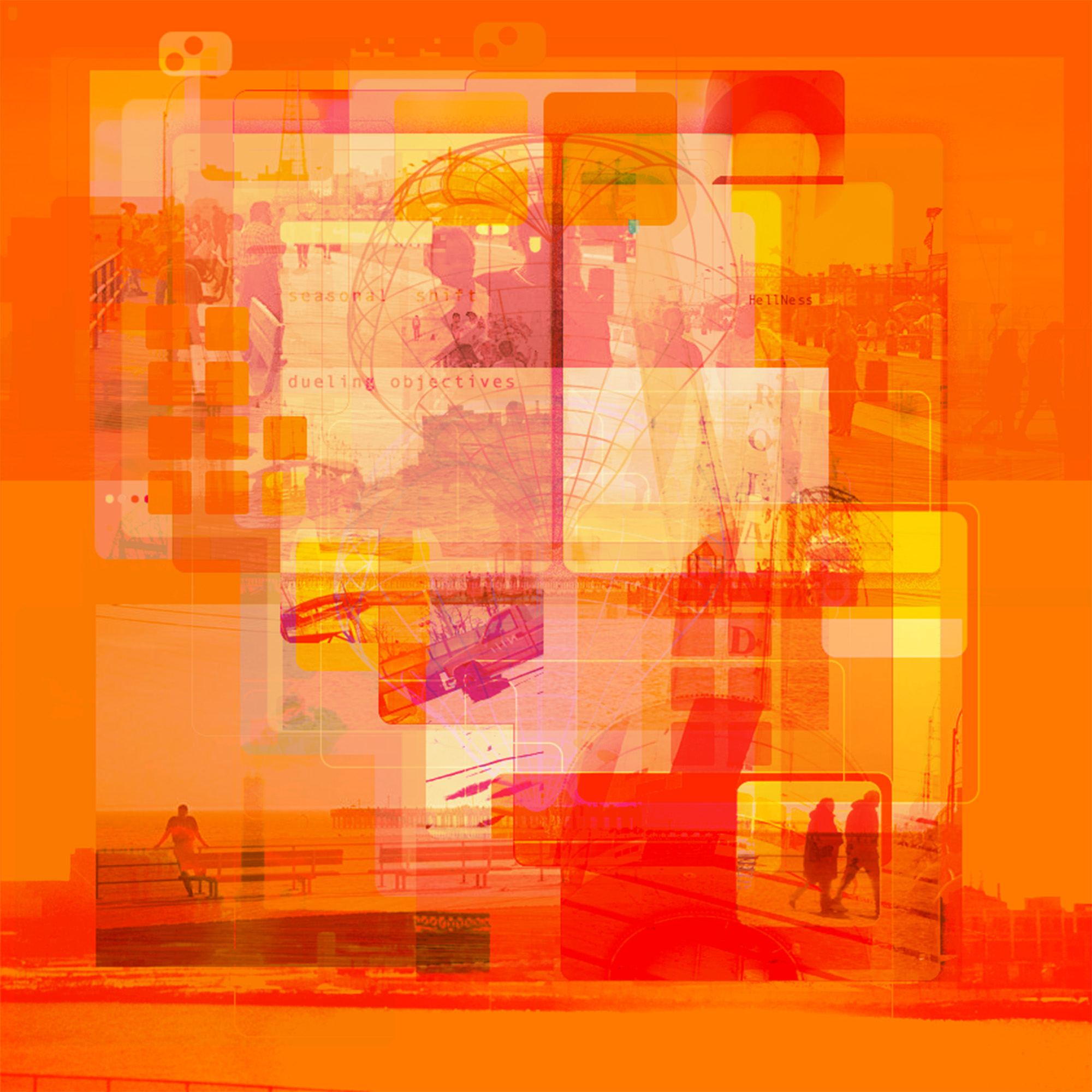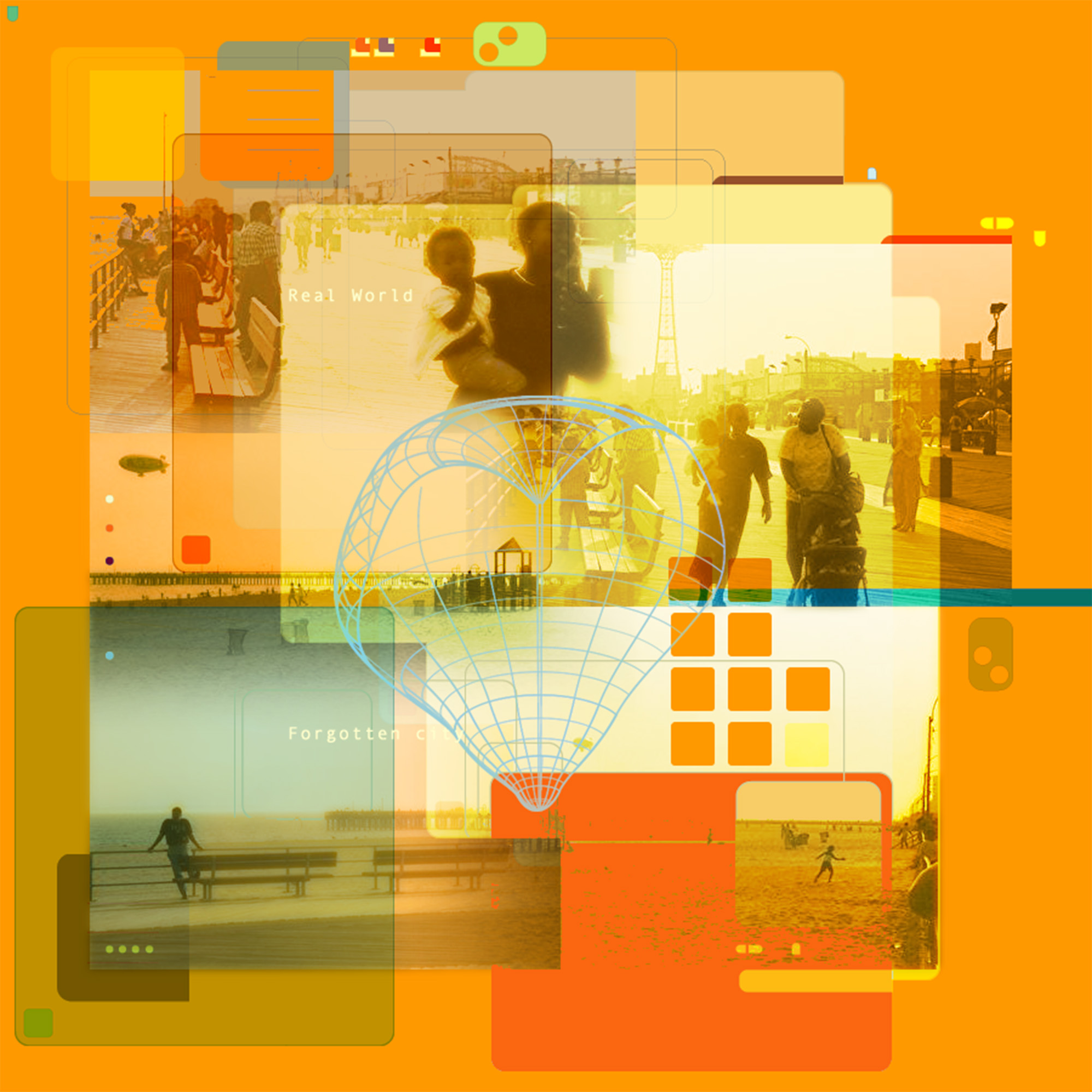Real Life, Forgotten City…
A photographer friend of mine, whose work I greatly admire, once described my poor photography as “a type of visual poetry that represents the emotions you are going through” (with “you” referring to me). This observation struck me deeply, as I had spent years trying to understand the purpose of my adhd induced, blurry, poorly composed, spontaneous “landscapes.” Throughout my childhood, I used cameras to capture moments that were neither important nor striking—just emotions I couldn’t articulate. The way we do it today, except that back then each image cost $1/$2 to process/print… But I needed a way to remind myself of those feelings.
This short video and sound composition is based on the interface for an interactive art project I created in 2001. The piece is part of a series titled “Moments In An Alternate Timeline.”
I composed the soundtrack based on the memories of the music, sounds, and moods I experienced while capturing photographs and film clips taken at Coney Island Boardwalk and Far Rockaway between 1998 and 2004. This period marked the transition from the last three years of my twenties to the first two years of my thirties—a time when the rhythm of my life was dynamic. It was a time of feasts and famines, dreams, ridiculous passions, small joys, and big pains, all still so vivid and tangible, with life feeling both possible and probable. The serious burnout that would come a few years later was still far beyond the horizon.
During this time, I listened to a lot of electronica, alt-pop, experimental jazz, and drum and bass, while creating quick “noise” sound pieces to stave off the creative itch that was stifled by my commercial art career.
In this composition, I reference these rhythms and movements to capture the nostalgia evoked by the long train rides and even longer walks up and down the boardwalk—into Brighton Beach, through Little Russia, and back again. The weary tiredness of the train rides back to Williamsburg, the recognition of the coming work week, and all the randomness NYC can offer on a silver platter.
In the recycling bin that was New York City in the late nineties, remnants of the decadence of the 1980s collided with the early anarchic ideals of the digital revolution, which themselves were quickly being overshadowed by WallStreet driven excesses of the “dot-com” boom era, a moment and industry in which I was one of many active participants.
In that time, Few places brought me as much solace as Coney Island, where I spent Sundays as a flâneur, or Fort Tilden Park, fishing and enjoying the waters at the mouth of the bay at the tip of the Rockaways—a beach destination still years away from becoming a favorite spot for the trendy crowd.
I constantly shot film, which I sometimes developed but could rarely afford to print. Instead, I scanned those negatives for later use, and I have continually drawn from that material in my work, carrying them with me on various media—an unsearchable catalog of my “visual poetry,” long before the easy catalogs offered by digital photography.
These dark, blurry, and grainy images capture a variety of random places and moments from my daily commutes and long walks. In these moments, I encounter countless unknown people. We all pass by one another like drifting ghosts, experiencing the contrasting realities of individuals from different backgrounds, yet sharing the same concentrated atmosphere of New York City, the city of refuge that has always welcomed us.
This piece begins with an image of two contrasting families walking along the boardwalk. Two Haitian women stroll joyfully with their young children, approaching me, while behind them, a Desi family stands about: the men and boys lean against the railing. In contrast, the mother stands still in the middle of the boardwalk, trying to photograph her family through the viewfinder of a disposable camera. People continuously flow between her and her family, making it difficult for her to capture the moment.
There are multiple frames on this filmstrip, capturing this scene. As the women pass me by, they converse animatedly in Creole, while a little Desi girl with the family group behind them seems to be scolded for running around too much, while a slightly older boy is clowning about, completely ignored by his parents.
Later images include the then-new beach playground sets, both with and without children, along with various rides from Luna Park. Also depicted are the abandoned rides further down the boardwalk—those featured in Woody Allen’s “Annie Hall,” which Giuliani illegally demolished just before they were declared historically protected in 2000.
The piece concludes with an image of two twin toddlers from a Puerto Rican family, who stand distractedly on the boardwalk after an impromptu merengue and salsa dance party breaks out to the music of a busking band. Additionally, there are images of two small Eastern European children running around in the sand; the frame is also covered in random and damaged Super 8 footage scraps, I shot in Coney Island during that period, which was ultimately ruined in a great flood that struck my loft in late ’99, when I lost most of my older paper artworks, negatives, slides, film and video materials in my studio.



